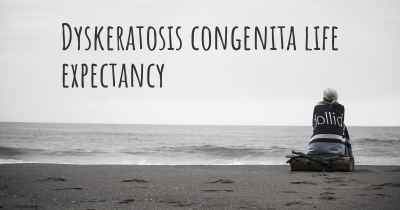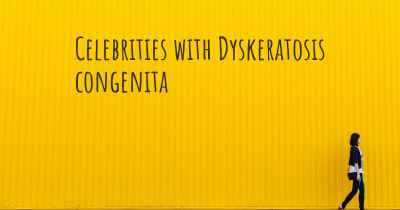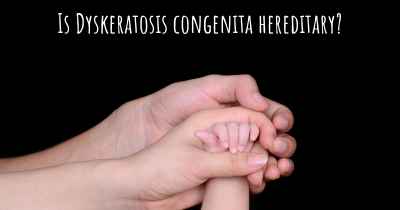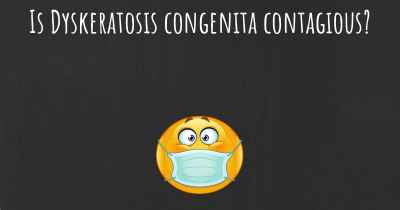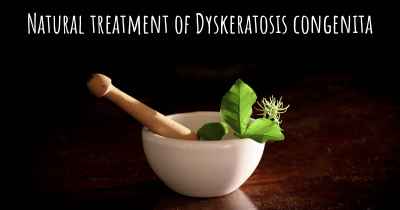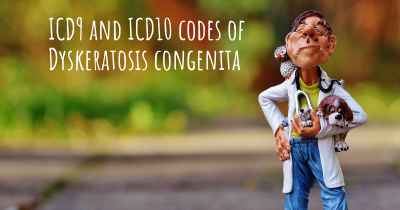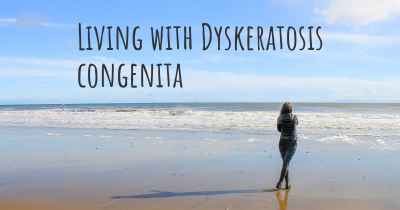Does Dyskeratosis congenita have a cure?
Here you can see if Dyskeratosis congenita has a cure or not yet. If there is no cure yet, is Dyskeratosis congenita chronic? Will a cure soon be discovered?
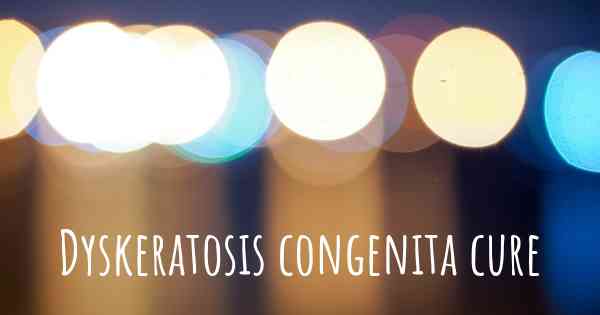
Dyskeratosis congenita is a rare genetic disorder that affects multiple body systems. Unfortunately, there is currently no known cure for this condition. Treatment mainly focuses on managing the symptoms and complications associated with the disorder. This may involve regular medical monitoring, blood transfusions, medications, and bone marrow transplantation in severe cases. Early detection and appropriate medical care can help improve the quality of life for individuals with dyskeratosis congenita.
Dyskeratosis congenita (DC) is a rare genetic disorder that affects multiple systems in the body, primarily the skin, nails, and bone marrow. It is characterized by a triad of symptoms including abnormal skin pigmentation, nail dystrophy, and leukoplakia (white patches) in the mouth and throat. DC is caused by mutations in certain genes that are involved in the maintenance and protection of telomeres, the protective caps at the ends of chromosomes.
Unfortunately, at present, there is no known cure for Dyskeratosis congenita. Treatment options mainly focus on managing the symptoms and complications associated with the disorder. The approach to treatment varies depending on the specific symptoms and severity of the condition in each individual.
For skin and nail abnormalities: Dermatological care is essential to address the skin and nail manifestations of DC. Regular moisturization, protection from trauma, and avoidance of excessive sun exposure can help manage skin issues. Nail care may involve trimming, filing, and protecting the nails to prevent infections.
For bone marrow failure: Bone marrow transplantation (BMT) is currently the only potentially curative treatment for DC-associated bone marrow failure. BMT involves replacing the patient's diseased bone marrow with healthy stem cells from a compatible donor. However, BMT is a complex procedure with potential risks and complications, and not all individuals with DC are suitable candidates for this treatment.
For other complications: Regular monitoring and management of other complications associated with DC, such as pulmonary fibrosis, liver disease, and gastrointestinal issues, are crucial. This may involve the use of medications, supportive care, and interventions specific to each complication.
Genetic counseling and support: Since DC is a genetic disorder, individuals and families affected by DC may benefit from genetic counseling. Genetic counselors can provide information about the inheritance pattern, recurrence risks, and available testing options. Additionally, support groups and organizations can offer emotional support, resources, and a sense of community for individuals and families affected by DC.
Research efforts are ongoing to better understand the underlying mechanisms of Dyskeratosis congenita and develop potential targeted therapies. While a cure for DC is not currently available, advancements in medical research may lead to improved treatment options and potentially a cure in the future.
